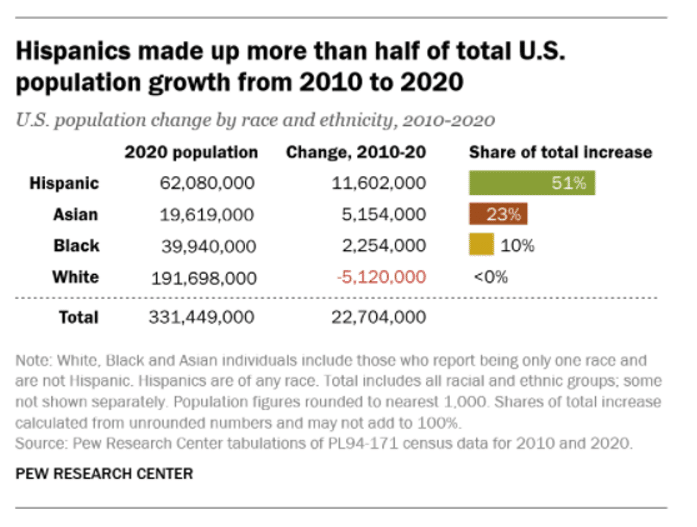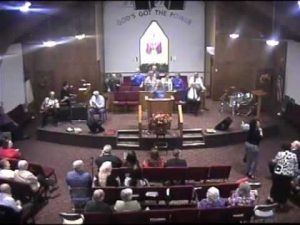Most people do not notice demographic changes because they happen slowly over many years. Then these changes reach an inflection point and everyone notices.
In the United States, the 2020 census revealed an inflection point. The white population declined nationally for the first time since 1790. All the nation’s growth is attributable to people of color. Almost every county in the United States grew in racial diversity. Additionally, the youngest generation is now minority white. This change is occurring in your community whether you choose to see it or not.
One of the most notable demographic changes is the rise of the Hispanic population. Hispanics made up over half of the total U.S. population growth over the last ten years. Today one in five Americans is Hispanic.

The Hispanic population is spreading geographically across the U.S. and is not limited to California, Texas, and Florida. Without the influx of Hispanics, our economy would be in worse shape, and birth rates would be lower. Moreover, as the white population declines and ages over the next two decades, the Hispanic population (and other people of color) will drive the growth of the U.S. economy.
What do these demographic changes mean for the church? How should you respond?
Connect. Who are the Hispanic pastors in your community? Do you know them? If you do not have a relationship with some of them, start by getting connected. Who are the Hispanic leaders in your area? What do they have to say? Connect with them and get to know them.
Learn. Once you are connected, go on a learning campaign. Ask questions and enjoy learning about other cultures and the background of people. Also, be sensitive to nuances as you learn. For example, though some use terms like Latino and Hispanic interchangeably, others do not. I use the term Hispanic in this article because of its connection to demographics and statistics, but I recognize not everyone prefers the term. For example, foreign-born people tend to identify more with the term Hispanic than those whose families have been in the United States for more than three generations.
Communicate. Start learning basic Spanish and make some new friends! I realize learning a language is a challenging endeavor. Think of the process as a mind exercise and a soul exercise. The language barrier is a significant reason why the gospel is not communicated. When you learn a new language, not only are you stretching your mind, but you are also preparing your soul for gospel conversations.
Invest. One of the best places to start is with children’s ministry. Many within the younger generation are bilingual. Also, be strategic about hiring Hispanic staff and equipping Hispanic leadership. You’ve likely heard that a church will become multi-ethnic only after the staff is multi-ethnic. It’s true. But a church will also not become multi-ethnic unless the budget reflects an investment in people of color. If you want to reach Hispanics, you need to invest time and resources into the effort.
As I’ve told my church many times, this process is harder but healthier. You will not regret connecting, learning, communicating, and investing in the Hispanic community.
Where can you begin? What is a good first step?
Start by getting to know your community. We recently updated our Know Your Community report to include data on the Hispanic community. How many Hispanics live within driving distance of your church? How much will the Hispanic population grow in the area around your church? This report will tell you!
The Know Your Community report is now available in a Spanish version! Church Answers is thrilled to make this resource available to our Spanish-speaking audience.
The post The Growth of the Hispanic Population in the U.S. and What It Means for Your Church appeared first on Church Answers.


Comments